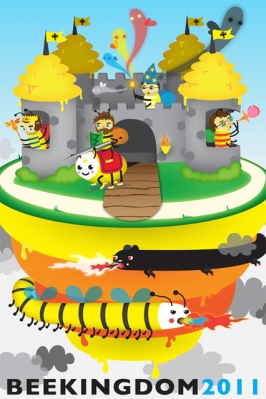 February 2011 cover of Contemporary Canadian Glass, the Magazine of the Glass Art Association of Canada; design by Ryan Marsh Fairweather
February 2011 cover of Contemporary Canadian Glass, the Magazine of the Glass Art Association of Canada; design by Ryan Marsh Fairweather
With accessibility to information, communication, and even food becoming revolutionized by the networking the Internet provides, many publications have been turning to the online world in a bid to cut costs and (potentially) reach a wider readership. The magazine of the Glass Art Assocation of Canada (GAAC), Contemporary Canadian Glass, made the decision to go paperless in recent years, and nearly two years later considers the hard decision a success.
GAAC is non-profit and entirely volunteer run, with unpaid enthusiasts contributing, editing, and distributing the magazine. Kept afloat with donations and memberships, the cost of publication has always been a concern. Before making the decision, the organisation polled its current members and subscribers, receiving a response GAAC President Jamie Gray describes as, “overwhelmingly positive.” The risk is that receiving the print publication in the mail was an important member benefit that helped drive sign-ups, while offering the magazine takes away this incentive to join the artists’ organization. In an email correspondence with the GLASS Quarterly Hot Sheet, however, Gray asserts that the exact opposite is true. GAAC membership is actually up 17-percent from last year, and one wonders if that may be because, rather than in spite, of the more easily available magazine.
On the other hand, and the other side of the Canadian border, The Glass Art Society’s own publication, GASNews, is still figuring out the best way to serve their members with an online newsletter. At one time, GASNews was printed newspaper style, black and white, with 24 pages that could be read in mere minutes. In a telephone interview with editor Geoff Isles, who pushed for the shift online, the reasons for going paperless align with the motivations of the Canadian organization: finances and flexibility. Putting the newsletter online saves the association “$30-40,000 a year in printing and postage,” with only a “negligible increase in design fees” according to Isles. The newsletter also offers full-color layouts rather than the simple black-and-white on the printed version, complete with additional images of the art, links to artists and their sites, presented in interesting, varied ways seems an attractive prospect. And yet Isles admits that readership of the online newsletter has not reached the levels of the print version. There are talks within the Glass Art Society about gaining more media accessibility, increasing online presence, and opening up certain aspects of their site to non-members. For now, however, the newsletter (which Isles is quick to point out is not a magazine) is considered a “membership benefit,” and unlike the Canadian publication, is only accessible to society members.
In Canada, the online experiment is viewed as an unqualified success. Perhaps members looked forward to receiving Contemporary Canadian Glass magazine in the mail, but now anyone with a computer can peruse the magazine and this very accessibility promote membership in the minds of the organization’s leadership. Writes Gray, “It seems that people continue to purchase memberships in order to support the organization and also because each member receives a page dedicated to their art on the website.” Indeed, GAAC’s newly revamped website features a comprehensive list of members separated by professional artists and students, with an added section for studios and work space. The magazine also features a link to the “Archives,” which magazine contributors are beefing up by re-printing what was once on paper and offering it online.
Contemporary Canadian Glass is published three times a year, and the latest, February 2012, features an interview with Bee Kingdom founder Philip Bandura (penned by former GAAC President Brad Copping), an explanation of the possibly game changing design software dedicated to glass, VitrEos by Vasil Sirmanov, Larissa Blokhuis’ case for the opening of a glass school in Vancouver, and something that paper technology simply can’t provide: a video of artist Sheena King’s work with glass beads.
-Katharine Morales


